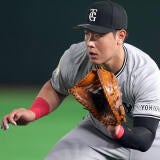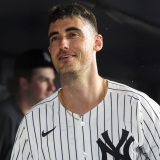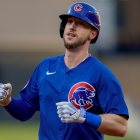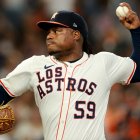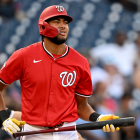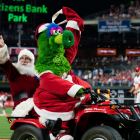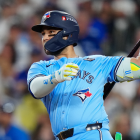MLB lockout ends: What's next for baseball as MLBPA, owners reach agreement and get ready for 2022 Opening Day
Here are six things that to need to happen around the league in the immediate aftermath of the lockout being lifted
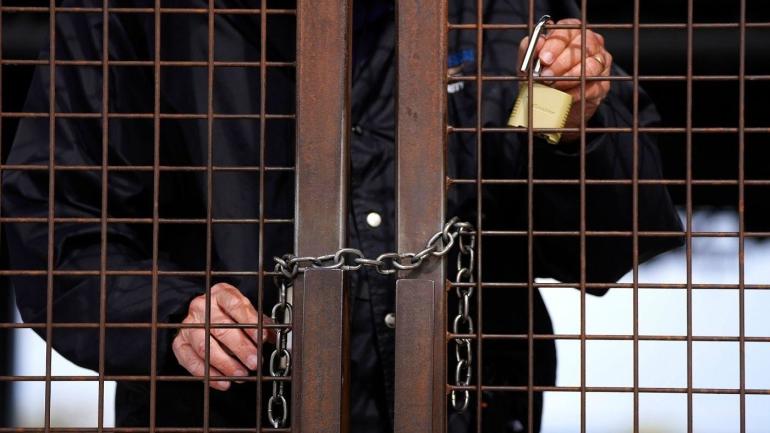
At long last, the owner-imposed lockout is over, and baseball is ready to return. MLB and the MLB Players' Association struck a deal Thursday following several marathon days of bargaining this week, according to multiple reports. At 99 days, the lockout is the second longest work stoppage in baseball history, behind only the 1994-95 player's strike (232 days).
Now that the lockout is over, we can shift our focus back to actual baseball, and there's a lot that must get done in a short amount of time. Opening Day is tentatively scheduled for Thursday, April 7, giving teams four weeks to hold spring training and finish all their offseason business. Several important dates and deadlines were missed during the lockout. Those now have to be rescheduled.
With that in mind, here's what needs to happen around the league in the immediate aftermath of the lockout being lifted. These items are listed in rough order of how quickly they must happen.
Secure visas
Roughly 30 percent of players on 40-man rosters were signed internationally and those players need work visas to return to the United States. Several live in the U.S. full-time and can report directly to spring training, but many others return home in the offseason to, say, the Dominican Republic (like Wander Franco) or South Korea (like Hyun-Jin Ryu). They need visas.
MLB clubs can (and do) assist their players with visas. Getting visas isn't a problem, necessary, though every year a few players get hung up with issues and report to camp late. This is just an important step in getting players to spring training that must happen. The paperwork isn't going to put itself together. The process of getting players their work visas has likely already begun.
Establish COVID protocols
This should be fairly easy and straightforward. MLB and the MLBPA can reup last year's COVID protocols, make any necessary tweaks, and call it a day. The NBA, NFL, and NHL stopped testing vaccinated players unless they show symptoms in recent weeks (the NFL and NHL put those policies in place in the middle of their seasons) and I would expect MLB to adopt a similar policy. Otherwise the COVID policy figures to look a lot like last year's. The two sides just have to shake on it.
Rule 5 Draft
The Rule 5 Draft is a mechanism to prevent teams from burying players in the minors indefinitely. After a certain number of years in the minors, players must be put on the 40-man roster, and those who aren't can be selected in the Rule 5 Draft. The player goes on his new team's 40-man roster and must stay on their active MLB roster all year, or be offered back to their former team.
Each offseason the Rule 5 Draft is held on the final day of the Winter Meetings. This offseason that was Dec. 9, a week after MLB locked out the players, so the Rule 5 Draft never happened. The major league portion of the Rule 5 Draft never happened, I should say. There's also a minor league phase that doesn't involve the 40-man roster. That took place as scheduled.
The major league phase of the Rule 5 Draft has been canceled, reports The Athletic's Zach Buchanan, though that has not yet been confirmed by MLB. The Athletic's Ken Rosenthal and Jayson Stark recently reported several teams approached MLB about canceling this year's event. Here's the reasoning:
Teams made their protection decisions in November based upon their evaluations at that moment, and an understanding at the time that the draft would take place at its normal time during the Winter Meetings in December.
What worries many clubs now is that so much more information is available. A player left unprotected in November might have gone to winter ball and excelled, long after the draft ordinarily would have taken place. Or, now that minor-league camps are opening, an unprotected player could arrive in spring training and show enough improvement to captivate opposing teams, making himself a Rule 5 target in March even though he might have been barely on any club's radar in December. Executives fear a club would be unfairly penalized if it lost a player while operating under a different set of assumptions than it did at the time of its original decision.
Teams want protection in case a player they left exposed in the Rule 5 Draft comes to camp with a new slider or a swing change, and makes himself into a more desirable Rule 5 Draft target. Canceling the Rule 5 Draft potentially takes big league opportunities away from players who have already spent too long in the minors. The lockout has essentially been leveraged into a way to keep more young and cheap players in the organization by eliminating the Rule 5 Draft.
Arbitration
There are 197 unsigned arbitration-eligible players and the arbitration process usually takes place across several deadlines that are weeks apart each offseason. These were this winter's milestone arbitration dates before the lockout changed everything:
- Nov. 30: Non-tender deadline. The deadline for teams to tender their arbitration-eligible (and pre-arbitration-eligible) players a contract for 2022. Players who did not receive a contract tender became free agents. This happened prior to the lockout.
- Dec. 14: Deadline for teams and arbitration-eligible players to submit salary figures. The player files what he believes he should be paid, and the team files what they believe the player should be paid. Most players sign contracts before this deadline.
- Jan. 31 to Feb. 18: Arbitration hearings. Each side states their case and the three-person panel picks the salary the player filed or the salary the team filed, nothing in-between. Only a few players actually go to a hearing each year.
The vast majority of those 197 unsigned arbitration-eligible players will sign 2022 contracts in the coming days and never have to file salary figures or go to a hearing, because that's what happens every offseason. Last winter only 13 of close to 200 arbitration-eligible players made it as far as filing salary figures. The rest signed contracts without hassle.
So, in the coming days dozens of arbitration-eligible players will sign contracts (ditto pre-arbitration-eligible players, who can have their contracts renewed at the salary of the team's choosing should they try to drag things out). There will undoubtedly be a few who can't come to terms, however, and have to go submit salary figures and eventually go to a hearing.
The new filing deadline is March 22, reports the Athletic's Ken Rosenthal, and hearings will take place during the season. There is precedent for that. Following the 1994-95 strike, some players went into the season not knowing their salary and had to wait for a hearing. Rosenthal and Jayson Stark recently noted former Orioles ace Ben McDonald did not go to his arbitration hearing until June 5 in 1995. He made his eighth start of the season later that night. From Rosenthal and Stark:
He recalled how ticked off he was just having to set the alarm for 7 a.m. so he could hustle to downtown Baltimore for an early morning hearing. He remembered looking around the room at his general manager, Roland Hemond, at club president Larry Lucchino and at their lawyers, getting ready to "tell me why I'm bad, (why) I don't deserve this kind of money."
"But here's the funny thing I remember," McDonald said. "After they tell me how bad I was, how I didn't deserve this, Roland Hemond walks up to me as we're walking out the door. He pats me on the ass and goes, 'Hey, go beat Randy Johnson for us tonight.'
Alas, McDonald did not beat the Big Unit that night, but he did win his arbitration hearing, securing a $4.5 million salary for 1995. The O's argued he deserved $3.2 million. Most arbitration business will be wrapped up before Opening Day because players will agree to contracts. A few won't, however, and it's possible their hearings won't be held until the regular season begins.
Free agency and trades
Oh yeah, there's still a lot of offseason work to be done. Stuff that usually gets spread across four months in the offseason will be squeezed into five weeks before Opening Day, and it could extend beyond Opening Day too. Remember when Dallas Keuchel and Craig Kimbrel signed in June?
Twenty-three of our top 50 free agents remain unsigned, including brand names like Carlos Correa and Freddie Freeman. Plenty of top trade candidates could be on the move too. The expectation is the first few days after the lockout will be chaos with nonstop free agent signings as players look to get their 2022 situation settled. Inevitably, some will have to wait into the season to sign.
This "offseason" work will hang over everything else that must happen these next few weeks. Teams will be looking at possible Rule 5 Draft picks and negotiating arbitration salaries while also scouring the trade market and free agency. The sooner you add a player, the sooner he can get acclimated, though there's not as much urgency to this as, say, getting visas for your current players.
Get everyone up to speed
There was no communication between teams and their 40-man roster players during the lockout. Players rehabbing from injuries could not talk to the training staff (Lance McCullers Jr. said this made his rehab "choppy"), and coaches could not connect with players. Did you know 16 teams hired a new hitting coach this winter? That's a lot of getting to know each other.
Also, there are bound to be injury revelations when teams and players reconnect. Sometimes players get hurt during their offseason workouts. Cubs reliever Codi Heuer recently hurt his elbow and had Tommy John surgery. Inevitably, a few surprise injuries will be dropped on teams when they reconnect with players, and that could impact their free agent and trade decisions.
So, while the Rule 5 Draft and arbitration and free agency and all that is taking place, teams and their players will have to spend time playing catch-up after more than three months apart. New coaches can begin to develop relationships, new players can meet their new teammates, the works. That kind of stuff happens every spring, but this year it will be a bit more intense.




